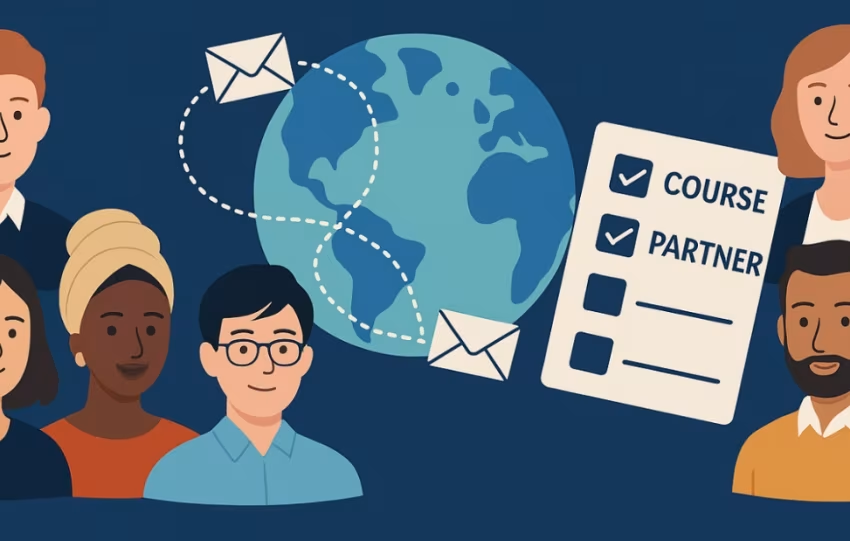Using Open Educational Resources in Teaching
Open Educational Resources (OER) are freely available teaching materials that you may use for your events. Here you can find out where to find OER and under what conditions you can modify and use them for your purposes.
Microsoft Teams
As in a virtual workspace, many teaching and learning settings can be mapped and (agile) projects managed in Microsoft Teams. Get an overview of Teams’ communication and collaboration options.
Setting Up a Collaborative Online International Le...
The first step in creating a COIL (Collaborative Online International Learning) project is identifying a suitable course and a partner that aligns with your academic goals. A well-matched collaboration enhances student learning by integrating diverse perspectives, interdisciplinary approaches, and real-world problem-solving. When establishing a cooperation with a teaching partner, it is important to agree on…
Digital teaching terms
Online, hybrid, blended, flipped … digital teaching knows many variations. For example, it can be completely online or a combination of classroom and online formats. We will illustrate the differences and provide orientation.
H5P
Make your online teaching more interactive and varied with H5P. Use playful elements (content types), such as Memory or interactive display models—employing a timeline or image juxtaposition—to support your students in the digital self-learning process.
Latest content
Once your course and institutional partner are confirmed, it’s time to co-develop your COIL project. In this phase, you and your partner will shape the course structure, activities, and timeline: What content will you cover? What kind of student collaboration is appropriate? And how can the courses at both institutions be meaningfully aligned?
The goal…
The first step in creating a COIL (Collaborative Online International Learning) project is identifying a suitable course and a partner that aligns with your academic goals. A well-matched collaboration enhances student learning by integrating diverse perspectives, interdisciplinary approaches, and real-world problem-solving. When establishing a cooperation with a teaching partner, it is important to agree on…
Looking to bring global perspectives into your lectures—without organizing a study abroad program? COIL (Collaborative Online International Learning) is a flexible and low-barrier way to internationalize your teaching. By teaming up with an international partner, you guide students through shared, virtual projects that build intercultural skills, digital fluency, and subject knowledge. This page introduces a…
More Posts
THEORIES AND METHODS
How to transfer Good Practices
Didactic design patterns (also known as patterns) document good practices in teaching. They are based on experience gained from teaching practice. The structured form of patterns allows tried and tested solutions to recurring problems to be described and published in an easily understandable way. As a result, they make good practices visible and offer a…
TOOLS
ILU – ILIAS Learning Environment
ILU stands for ILIAS learning environment and is the central learning management system of TH Cologne. ILU offers numerous functions for learning support and interactive learning, communication, and collaboration. Faculty or institution-internal digital teaching expert teams (DLE teams) advise and support the technical and didactic development of digital teaching in ILU and form the interface…
Teaching strategy
Gender diversity in university teaching
As a teacher, how can I create a teaching and learning space where everyone feels comfortable? There is certainly no universal solution to this problem. However, engaging with diverse identities and one’s own stereotypes can dismantle discriminatory structures and unconscious preconceptions. In the following article, you will learn how to ensure gender-sensitive teaching.
THEORIEN UND METHODEN
How competence orientation succeeds in teaching
Competence-oriented teaching focuses the entire learning process on guiding students in the actual application of their knowledge. Learning Outcomes are defined in such a way that, in addition to mere subject knowledge (knowing what), its application, further development, and use (knowing how) are also integrated into the teaching. From the beginning, fair and valid assessment…
TOOLS
Miro
On the virtual whiteboard Miro, you can work interactively and synchronously with your students, regardless of location. We will show you how to use the tool to combine media, collect ideas together and develop concepts.
Lehrstrategie
Diversity-Conscious Teaching
Diversity and its appreciation are an essential part of the university’s self-image and thus also of the teaching and learning culture at the TH Köln. We accompany you on your way to a more diversity-conscious teaching and working environment.
Stay up to date!
You will always find out via our e-mail distribution list when there is new content on the Digitoolbox pages. We will also inform you about advisory services and events.









